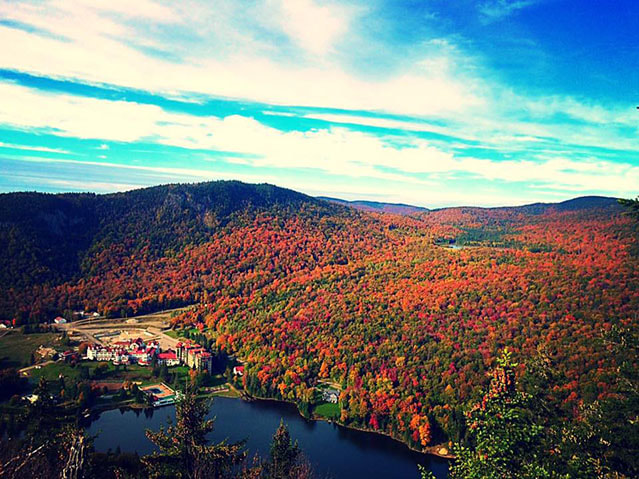By Mark Okrant, NH Travel Guru
At approximately this time each year, residents and visitors to northern New England anticipate the arrival of fall foliage. Whether you prefer the bright oranges of the sugar maples, red maple leaves, or yellow leaves produced by American beeches, birches, and quaking aspens—they’re all here in New Hampshire.

Mark Okrant, the NH Travel Guru
Years ago, another state’s tourism ad labeled the Ozarks as the best place in the world to view fall foliage. My reaction . . . are you serious? With all due respect to that beautiful stretch of mountains that traverse the borders of Missouri, Arkansas, and Oklahoma, there is simply no way your foliage is the best.
What are the natural features that produce fall foliage? Some of us erroneously believe that green leaves are somehow painted assorted colors at about the time summer turns to fall, and the first frost arrives.
In truth, the colors that we so appreciate were actually there all along, but have been turned green by the creation of chlorophyll during photosynthesis—the process that converts sunlight to glucose—thereby feeding trees. Once the weather turns colder, and the days are shorter, the production of chlorophyll ceases, and the leaves’ true colors appear.
From the standpoint of the tourism industry, the presence of fall foliage is extremely important to the region’s economy. Here in New Hampshire, the fall travel season—boosted by a brief leaf-peeping period—is our second in popularity.
Only during summer do we see the arrival of more out-of-state visitors. During the fall season, one quarter of all visitation and spending by out-of-state residents occurs. So, if you’re one of those people who feels that winter is the state’s second travel season, you are incorrect.
More to the point, it is during foliage season that New Hampshire receives its greatest representation of visits from distant parts of the U.S. and from overseas.
Now, back to the controversy over which state offers the best foliage season. Truthfully, a strong claim can be made by any of the three states that comprise northern New England: Maine, Vermont, and New Hampshire.
Vermont’s foliage serves as the backdrop for its numerous idyllic towns and family farms. Moreover, credit must be given to that state’s Agency of Transportation, which recognizes the value of scenic vistas and, ironically, maintains the roadsides so you actually can see the forest through the trees.
Maine, which is nicknamed the Pine Tree State, possesses an extensive rocky coastline dotted by quaint coastal fishing villages. While pine trees may be in abundance, there are numerous opportunities to spot foliage as well.
New Hampshire offers several features that, in your guru’s opinion, set it apart from those two competitors. Owing to its geologic history and the impact of glaciation upon its landforms, the state offers a bold combination of rugged mountains, sculpted valleys, and an abundance of pristine lakes.
Furthermore, New Hampshire is characterized by a true “mixed forest,” wherein deciduous and evergreen trees dot the land in near-equal numbers. The result is a photographer, artist, or writer’s dream . . . a bold splash of colors interspersed with green needle leaves, and a backdrop of exposed Concord and Conway granites.
Given all of this beauty . . . spiced with a splash of writer’s bias . . . New Hampshire must be declared the clear winner. My sources tell me that the 2018 foliage season may be late this year. But, be patient, dear readers . . . the best is about to come.
In April 2017, after forty years as an educator, researcher, consultant, and mystery writer, Mark Okrant joined IndepthNH.org. Mark shares his insight about the travel and tourism industry, focusing upon its importance to New Hampshire. From time to time, he’ll spin a humorous story or two, always looking to educate us about the industry he loves.
Learn more about Mark’s tourism-based Kary Turnell murder mystery series by visiting www.markokrant.com.
For information on current things to do in New Hampshire, go to:





